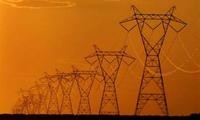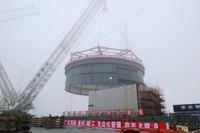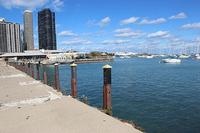-
FBI moves cyberthreats to top of law-enforcement agenda
FBI director James Comey said combatting cybercrime and other cyber threats are now top FBI priority. “It (the Internet) is transforming human relationships in ways we’ve never seen in human history before,” Comey said. “I see a whole lot of hacktivists, I see a whole lot of international criminal gangs, very sophisticated thieves,” he added. “I see people hurting kids, tons of pedophiles, an explosion of child pornography.” In October Comey urged Congress to require tech companies to put “backdoors” in apps and operating systems. Such a move would allow law enforcement officials to better to monitor suspected criminals who often escape the law using encryption and anti-surveillance computer software.
-
-
Congressional funding allows partial roll-out of Calif. seismic early warning system
California officials applauded the U.S. Senate approval of the $1.1-trillion spending package, which allocated $5 million to fund expansion of the state’s earthquake early-warning system dubbed ShakeAlert.In 2015, a select number of schools will receive earthquake alerts to warn students and teachers to drop and cover before shaking begins, fire stations will be alerted to open their garage doors before electricity goes out and prevents doors from opening, and some hospitals will receive notice to suspend surgeries.
-
-
Cyber whodunnit: North Korea prime suspect but there are many potential culprits
Many suspect North Korea to be behind the attack on Sony Pictures. North Korea quite possibly has motive, means, and opportunity to carry out this attack on Sony, but as with any successful prosecution, that isn’t enough. We need evidence. We will have to wait for the detailed forensic work to complete before we stand a realistic chance of knowing for certain. That may or may not be forthcoming, but in the meantime we should consider what this event tells us about the balance of power in cyberspace. In a world in which major disruption can be caused with scant resources and little skill, all enemies are a threat. North Korea might be the rogue state that everyone loves to hate but there are plenty of others who could have done it. There is no longer a tiered approach of superpowers fighting proxy wars in smaller, developing nations. Now those developing nations can fight back, and you might not even know it was them.
-
-
Power grids in coastal U.S. cities increasingly vulnerable as a result of climate change
Cities such as Miami are all too familiar with hurricane-related power outages. A new analysis finds, however, that climate change will give other major metropolitan areas a lot to worry about in the future. Johns Hopkins University engineers created a computer model to predict the increasing vulnerability of power grids in major coastal cities during hurricanes. By factoring historic hurricane information with plausible scenarios for future storm behavior, the team determined which of twenty-seven cities, from Texas to Maine, will become more susceptible to blackouts from future hurricanes. The team’s analysis could help metropolitan areas better plan for climate change.
-
-
House approves 4-year extension of chemical facility safety legislation
On 11 December the House approved a 4-year reauthorization of DHS’s Chemical Facility Anti-Terrorism Standardsprogram (CFATS), meant to protect U.S. chemical facilities from terrorist attacks. President Barack Obama is expected to sign the bill(H.R. 4007). Implementing the CFATS program will cost roughly $349 million over fiscal years 2015 to 2019. The CFATS, authorized in Section 550 of the 2007 DHS Appropriations Act, requires industrial facilities with certain levels of use or storage of chemicals to submit information about their chemical holdings to DHS, assess their vulnerabilities, and submit plans to address those vulnerabilities and secure their chemical holdings.
-
-
Impact of solar storm on U.S. infrastructure cannot be predicted with certainty
Of the many threats to the U.S. electric grid, from cyberattacks to terrorism, industry experts agree that the most catastrophic, yet least likely to occur, threat is a magnetic space storm which could shut down the grid and cause other infrastructure to fail. Previous large scale solar storms include the 1859 Carrington Event — the strongest storm on record — and a March 1989 coronal mass ejection which caused a 9-hour blackout in Quebec.
-
-
Link between power lines and ill-health called into question

Several past studies have suggested that the magnetic fields created by phones, high-voltage power lines, and other electrical equipment are harmful for humans. Research first carried out in the 1970s and again subsequently, found an association between people living near overhead power lines and an increased risk of childhood leukemia, and the International Agency for Research on Cancer has categorized low frequency magnetic fields as “possibly carcinogenic.” A mechanism for this association has never been found, and now a research team studying the effects of weak magnetic fields (WMFs) on key human proteins, including those crucial for health, found that they have no detectable impact.
-
-
N.C. panel to issue sea-level rise forecast to guide coastal, infrastructure development
Scientists with the North Carolina Coastal Resources Commission(CRC) will have their last public meeting today (Monday) before the group issues its projections on sea level rise around the state’s coastal areas. In a 2010 forecast, the science panel concluded that North Carolina’s sea levels would increase by thirty-nine inches by 2100. Climate-change skeptics and coastal developers opposed the report, and in 2012 persuaded the state legislature to bar any state agency from adopting a policy based on any sea level forecast. The legislature modified the CRC’s mandate by limiting its projections to 30-year periods and instructing it to focus on four separate zones and not the entire state projections. The CRC will submit it report to the legislature on 1 March 2016.
-
-
Ultrasonic robot inspects pipes at nuclear power plant
GE Hitachi Nuclear Energy (GEH) the other day announced that its ultrasonic robot, Surveyor, successfully inspected a section of underground pipe at the South Texas Project Electric Generating Station. The inspection at the site of two Westinghouse-built pressurized water reactors near Bay City, Texas, marks the first deployment of the state-of-the-art robot at a nuclear power plant.
-
-
SCE&G places 180,000-pound CA05 module at V.C. Summer Unit 2, S.C.

South Carolina Electric & Gas Company (SCE&G) and its partners placed on 6 December the CA05 structural module on the V.C. Summer Unit 2 nuclear island. The company says this is one of several milestones achieved this year in the construction of nuclear reactors that are among the first in the U.S. in thirty years.
-
-
New chemical sponge would lessen the carbon footprint of oil industry
U.K. scientists have discovered a ground-breaking technique with the potential dramatically to reduce the amount of energy used in the refinement of crude oil. The existing industrial process uses huge amounts of energy to separate and purify these gases, so the new technique has the potential to revolutionize the oil industry by significantly reducing carbon emissions and making the process more environmentally friendly.
-
-
Florida's First Coast region trying to cope with rising seas
City planners in Florida’s First Coast region are taking steps to avoid massive destruction to property and human life as sea level rise is expected to cause mass flooding and super storms during the next few decades. Some groups are lobbying for coastal property-insurance reforms, while others are researching ways to help historic properties manage flooding.
-
-
Exploring ways to deal with Great Lakes water-level changes

Extreme water-level fluctuations in the Great Lakes, including historic lows on lakes Michigan and Huron in 2013 and substantial upward trends in 2014, are creating serious challenges for many shoreline property owners, tourism-related businesses, municipal planners, and others. To help these community decision makers determine the best strategies for dealing with these water-level changes, a two-tiered, two-year research initiative has been launched with the goal of developing information, tools, and partnerships to help decision makers address challenges and opportunities posed by water-level variability.
-
-
Water’s role in the rise and fall of the Roman Empire
The Roman Empire, stretching over three continents and persisting for many centuries, was home to an estimated seventy million people. In such a vast area ensuring a stable food supply was no easy task, particularly given the variable and arid climate of the Mediterranean region. Smart agricultural practices and an extensive grain-trade network enabled the Romans to thrive in the water-limited environment of the Mediterranean, a new study shows. The stable food supply brought about by these measures, however, promoted population growth and urbanization, pushing the Empire closer to the limits of its food resources.
-
-
Turning excess space into apartments as an incentive for earthquake-retrofitting of buildings
San Francisco is dealing with a housing shortage at the same time that city officials are trying to get landlords to retrofit buildings which are at risk of crumpling during a severe earthquake. In 2013, Mayor Ed Lee approved a bill that mandates retrofits for soft-story multi-unit residential buildings over the next four to seven years. Roughly 4,800 buildings of two or more stories, containing five or more apartment units, which were approved for construction before January 1978, have to be retrofitted, according to the mandate.A member of San Francisco’s Board of Supervisors, recently proposed that building owners of at-risk apartment buildings be allowed to finance earthquake retrofits by converting garages, basements, and other excess space into apartments –a plan which would also increase the city’s housing stock.
-
More headlines
The long view
Water Wars: A Historic Agreement Between Mexico and US Is Ramping Up Border Tension
As climate change drives rising temperatures and changes in rainfall, Mexico and the US are in the middle of a conflict over water, putting an additional strain on their relationship. Partly due to constant droughts, Mexico has struggled to maintain its water deliveries for much of the last 25 years, deliveries to which it is obligated by a 1944 water-sharing agreement between the two countries.
Trump Is Fast-Tracking New Coal Mines — Even When They Don’t Make Economic Sense
In Appalachian Tennessee, mines shut down and couldn’t pay their debts. Now a new one is opening under the guise of an “energy emergency.”
Smaller Nuclear Reactors Spark Renewed Interest in a Once-Shunned Energy Source
In the past two years, half the states have taken action to promote nuclear power, from creating nuclear task forces to integrating nuclear into long-term energy plans.
Keeping the Lights on with Nuclear Waste: Radiochemistry Transforms Nuclear Waste into Strategic Materials
How UNLV radiochemistry is pioneering the future of energy in the Southwest by salvaging strategic materials from nuclear dumps –and making it safe.
Model Predicts Long-Term Effects of Nuclear Waste on Underground Disposal Systems
The simulations matched results from an underground lab experiment in Switzerland, suggesting modeling could be used to validate the safety of nuclear disposal sites.
